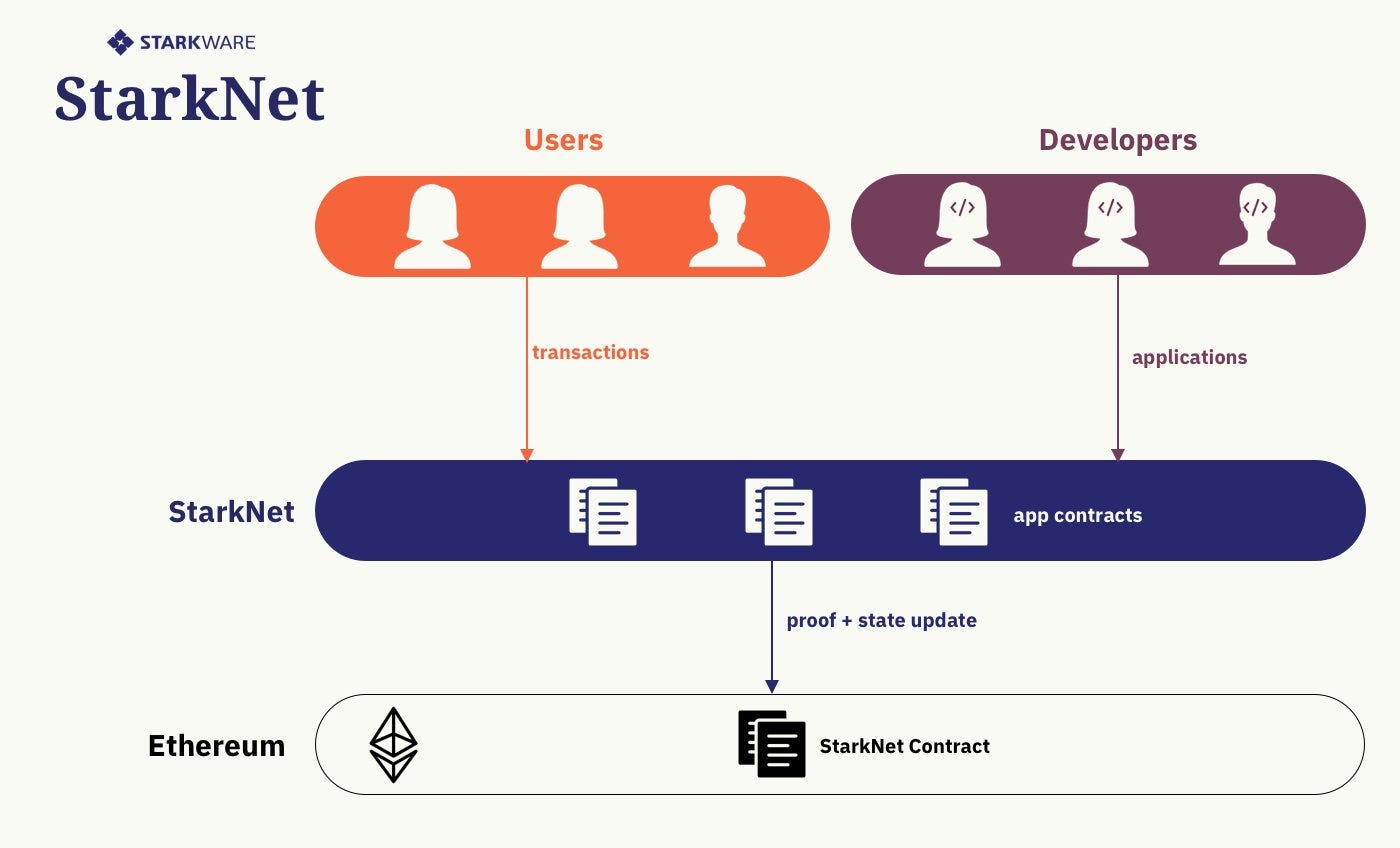The blockchain technology era has seen the emergence of computational systems that offer unparalleled transparency and comprehensive accountability. However, these systems have traditionally had to negotiate certain trade-offs that have hampered their usability. The “Blockchain Trilemma” elucidated by Vitalik Buterin encapsulates this predicament, stating that blockchains often struggle to achieve decentralization, scalability, and security simultaneously.
This is where StarkNet steps in. It seeks to overcome the Blockchain Trilemma by presenting a system that is fully accountable, decentralized, scalable, and secure. Functioning as a layer 2 network over Ethereum, StarkNet offers the potential for any dApp to achieve unlimited scale for its computation, retaining Ethereum-level composability and security thanks to its reliance on STARK, one of the most secure and scalable cryptographic proof systems.
My name is Daria Morgen, and I have been covering crypto for over 3 years now. I believe an initiative like StarkNet can be of great help when it comes to getting closer to seeing crypto mass adoption. Let’s take a closer look at it!
Table of Contents
What Is StarkNet and How Does It Work?
Developed by the Israel-based StarkWare, StarkNet is a layer 2 Validity Rollup. It boasts high throughput and low gas costs while maintaining the security levels of Ethereum’s layer 1. StarkNet’s approach to scaling Ethereum involves substituting the heavier layer 1 computation with lighter and less costly layer 1 verification through the use of off-chain computed STARK proofs.
If you’re new to terms such as “layer 2” or “ZK-Rollups,” you can learn more about them in this article.
StarkNet’s ultimate layer 1 security is guaranteed by the application of the STARK cryptographic proof system. Although the STARK technology is secure and mature, StarkNet is still working towards becoming a public resource like Ethereum or the Internet. This requires continuous decentralization of its governance, operations, and development, a process that will be facilitated through the StarkNet Foundation and the StarkNet Token.
The StarkNet Foundation was established as an independent entity to advance StarkNet technology. The foundation, a non-profit entity, aims to advance and maintain StarkNet as a public resource. The foundation launched with 50.1% of the initial token supply to ensure effective deployment of the network’s resources for the maintenance, development, and expansion of StarkNet.

Most StarkNet contracts are written in the Cairo language, a Turing complete programming language designed for STARK proofs.
What Is STARK?
STARKs are used as validity proofs to verify computational integrity. STARKs enable one party to validate to another that a specific computation was executed correctly.
STRK, the StarkNet Token
The native StarkNet token, STRK, was deployed on Ethereum in November 2022. At the time of writing, it wasn’t available for sale. It was primarily created for paying transaction fees as well as for enabling participation in the StarkNet protocol and the project’s governance.
At the moment, fees on the platform are still paid in Ethereum (ETH). However, the StarkNet dev team has plans to change that and transition to fees payable in STRK.
What Are the Benefits of StarkNet?
The main benefit of StarkNet is that it allows dApps to hugely boost scalability without sacrificing any other important factors, such as compromising Ethereum’s composability and security.

Additionally, unlike other ZK rollups such as zkSync, StarkNet isn’t a “zkEVM.” This means that smart contracts (like those powering popular Ethereum dApps such as Uniswap and OpenSea) have to be written in StarkNet’s unique programming language, Cairo — a powerful language optimized for ZK rollups, which allows computations to be significantly cheaper. This presents new, previously impossible blockchain opportunities, including the development of real blockchain games.
How to Use StarkNet
In order to build and interact with the StarkNet ecosystem, you will need to get a StarkNet wallet. At the time of writing, the two wallets that support the project were Braavos and Argent X.
StarkNet’s evolution towards full permissionlessness will enable developers, users, and StarkNet nodes to execute a wide variety of actions. Here are some of the roles StarkNet provides for network participants.
- Sequencers. Anyone can operate a sequencer, propose new blocks, and batch transactions (somewhat similar to Ethereum miners, minus the proof-of-work element).
- Provers. Anyone can set up a prover and create proofs for the validity of new blocks.
- Developers. Developers can deploy their smart contracts permissionlessly.
- Users. Users can send transactions permissionlessly, with decentralization eliminating the possibility of censorship.
If you’re excited about StarkNet and its decentralization and wish to participate in the process, you can join the project on the StarkNet Discord and StarkNet community forum.
StarkNet dApps

StarkNet supports the deployment of any dApp projects, with Cairo enabling the implementation and processing of any business logic over StarkNet. Some of the dApps available on StarkNet include:
- 10KSwap – a layer 2 AMM protocol
- Banxa – a leading crypto on- and off-ramp solution
- briq – an NFT building protocol
- Cartridge – a StarkNet gaming console
- Aspect – an NFT marketplace
The Future of StarkNet
The StarkNet crypto project is always looking for new partnerships. One of their partners is Chainlink — in February 2023, Chainlink Price Feeds became available on StarkNet testnet, marking a significant milestone in providing StarkNet developers with industry-standard reliable oracle services.
This collaboration, facilitated by SpaceShard’s tech support and expertise, is part of the Chainlink SCALE program. StarkNet tokens will cover certain operating costs of Chainlink oracle nodes that supply StarkNet with a variety of Data Feeds and other oracle services, aiming to accelerate the growth and long-term adoption of StarkNet by developers and users.
The StarkNet developer team consistently updates StarkNet and introduces new features in line with the roadmap, showcasing a promising future for this innovative platform.
FAQ
What is StarkNet OS?
The StarkNet OS includes the Cairo program, which is responsible for running StarkNet. The operating system manages all network activities, including contract deployment, transaction execution, and other tasks.
What is a StarkNet contract address?
The contract address is a unique identifier of the contract on StarkNet. It has many functions, such as helping to relay on-chain data.
Disclaimer: Please note that the contents of this article are not financial or investing advice. The information provided in this article is the author’s opinion only and should not be considered as offering trading or investing recommendations. We do not make any warranties about the completeness, reliability and accuracy of this information. The cryptocurrency market suffers from high volatility and occasional arbitrary movements. Any investor, trader, or regular crypto users should research multiple viewpoints and be familiar with all local regulations before committing to an investment.











